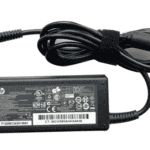Losing luggage when traveling can be a stressful experience. Thankfully, technology is helping solve this common problem. Now several airlines can track down lost bags using Apple AirTags, allowing passengers to share the exact location of their luggage through the Find My app.
Apple’s Share Item Location feature works with compatible airlines to help reunite travelers with their missing bags faster. Instead of waiting helplessly for updates, passengers can create a link showing their luggage’s precise location and add it to their delayed baggage report. This system is available for United Airlines and many other carriers who have adopted this technology.
The process is simple and effective. After filing a report about missing luggage, travelers with an AirTag attached to their bag can generate a Share Item Location link in the Find My app on their Apple device. This information helps airline staff pinpoint the exact location of the bag, significantly reducing recovery time and passenger frustration.
Airlines Are Finally Catching Up to What Passengers Already Knew
For years, frustrated travelers turned to Apple’s AirTags as a DIY solution to locate missing luggage faster than the airlines could. Now, airlines are beginning to catch on—officially embracing this same technology to improve their own baggage tracking systems. The result? Faster reunions with lost bags, better customer service, and a potential shift in how mishandled baggage is handled industry-wide.
United Airlines Leads the Pack
United became the first major airline to integrate AirTag tracking into its customer support flow. Through an update to its mobile app, customers can now file delayed baggage claims that include a shared location link from their AirTag. This gives customer service agents direct access to the real-time (or last known) location of the bag via Apple’s Find My network. That one step eliminates the guesswork—and often days of delay—previously involved in locating a wayward suitcase.
How It Works
- Passenger adds an AirTag to their checked baggage.
- If the bag is delayed, they file a report through United’s app.
- The app prompts them to share a secure location link using Apple’s “Share Item” feature.
- United agents use the shared data to pinpoint and recover the luggage quickly.
American, Lufthansa, and Others Join In
Following United’s lead, American Airlines and several European carriers like Lufthansa, SWISS, Austrian Airlines, Brussels Airlines, and Eurowings have started offering similar support. Customers using iPhones with iOS 18.2 or later can share their AirTag’s location via a secure link when filing a delayed baggage claim. The process varies slightly per airline, but the core idea is the same: passengers provide the data, and agents use it to act faster and smarter.
This marks a turning point for international air travel, particularly given how resistant airlines had been in the past to allowing tracking devices in checked luggage due to “aviation safety concerns.” That resistance is fading fast, replaced by a growing recognition that passengers expect modern tech to solve old problems—and they’re willing to use their own devices to do it.
Why AirTags Work So Well
Apple’s AirTags tap into a vast, decentralized network of Apple devices—meaning even if your luggage is on a different continent, someone’s iPhone nearby can ping its location. Because it doesn’t rely on GPS or Wi-Fi alone, the tag is incredibly power-efficient and precise. A single battery can last over a year, and it updates its location frequently as long as it passes within Bluetooth range of any Apple device with Find My enabled.
For travelers, this means real-time peace of mind. For airlines, it means they no longer have to depend entirely on scanning barcodes at checkpoints. It fills the gaps between those scans and provides a trail they can follow, even when a bag has gone off-route.
AirTag Integration May Reshape Airline Logistics
Behind the scenes, airlines are quietly adjusting their baggage handling protocols. When a customer provides an AirTag location, it’s often more accurate than anything the airline’s internal systems can produce. In many cases, passengers have been known to arrive at baggage claim and tell the staff exactly which airport—or even which carousel—their bag is currently sitting at.
Now that airlines are officially tapping into this data, customer service teams are better equipped to locate missing bags before they become “lost luggage” statistics. This shift could reduce costs, shorten resolution times, and improve satisfaction scores across the board. It also signals a growing openness to integrating consumer tech into airline operations—a long-overdue change in an industry often criticized for its outdated processes.
What Travelers Should Know
- Still Optional: You don’t have to share your AirTag data—but doing so helps the airline help you faster.
- Not All Airlines Offer It Yet: While United, American, and Lufthansa Group airlines are on board, others may still be catching up.
- iOS Version Matters: You need iOS 18.2 or newer to use Apple’s Share Item feature.
- Only Works with Apple Devices: Android users can’t use AirTags, though there are alternative trackers like Tile or Chipolo.
The Future of Lost Luggage Might Be in Your Pocket
With this new shift in how lost luggage is tracked and returned, AirTags are no longer just a helpful workaround—they’re becoming part of the solution. As more airlines integrate this functionality, travelers may finally experience fewer nightmares at the baggage carousel. And if the industry embraces this fully, we may soon see a world where “lost luggage” becomes the exception, not the norm.
Key Takeaways
- AirTags paired with the Share Item Location feature help airlines find lost bags faster and more accurately.
- Eighteen airlines now accept AirTag location data when processing luggage claims.
- Travelers need updated Apple devices with iOS 18.2, iPadOS 18.2, or macOS 15.2 or later to use this feature.
Innovative Luggage Tracking with Apple AirTag
Apple AirTags have revolutionized how travelers keep track of their belongings. These small devices now play a significant role in helping airlines locate misplaced luggage through direct integration with airline systems.
The Essentials of Apple AirTag for Airlines
Apple AirTags are small, coin-shaped tracking devices that use Bluetooth technology and Apple’s Find My network to locate items. These tags can be attached to luggage, providing real-time location information viewable on iPhones, iPads, and other Apple devices.
The recent iOS 18.2 update introduced a game-changing feature called “Share Item Location.” This allows travelers to share their AirTag’s location directly with airlines when luggage goes missing.
Setting up an AirTag is simple:
- Bring the tag near your iPhone
- Follow the on-screen setup instructions
- Attach it to your luggage
- Track it through the Find My app
The Find My network leverages millions of Apple devices worldwide to relay location data, making it possible to track luggage even when it’s far from your personal device.
Airline Integration of AirTag Technology
Currently, 18 airlines have partnered with Apple to integrate AirTag tracking into their customer service process. Major carriers including United, Delta, Air Canada, British Airways, and Singapore Airlines now accept AirTag location data when processing lost baggage claims.
The process is straightforward:
- File a delayed baggage report online
- Share your AirTag’s location through a link
- Allow airline staff to use this information to locate your bag
This integration has significantly improved the baggage recovery process. Before AirTags, passengers had little visibility into where their lost luggage might be. Now, airlines can see exactly where bags are located and expedite their return.
The Lufthansa Group (including Austrian Airlines and Swiss) was among the first to embrace this technology. Other airlines like KLM, Turkish Airlines, and Qantas have followed suit, recognizing the value in reducing baggage handling frustrations for their customers.
Enhancing Customer Service and Baggage Security
Airlines are leveraging Apple’s AirTag technology to transform how they handle lost luggage. This innovative approach allows passengers to share precise location data, making baggage recovery faster and more efficient.
Advancing Customer Service with Location Technology
Airlines like Virgin Atlantic and Lufthansa now let travelers share AirTag locations directly with customer service teams. This integration creates a smoother recovery process for mishandled bags.
When luggage goes missing, passengers can generate a shareable link through the Find My app. This link provides an interactive map showing the exact location of their belongings.
The technology works with the following process:
- Passenger reports missing baggage
- Customer service requests AirTag location
- Passenger shares location link
- Airline uses precise coordinates to recover the item
This system has already reduced recovery times significantly. Instead of waiting days for bags to be found, many travelers now see their luggage returned within hours.
Global Baggage Handling Solutions
The partnership between Apple and 18 participating airlines represents a major shift in global baggage handling. Delta Air Lines and United are among the carriers integrating this service into their operations.
This technology works with existing systems like SITA WorldTracer, which airlines already use to track delayed baggage. The addition of precise AirTag location data fills gaps in the current system.
For international travelers, this service is especially valuable. Luggage that ends up in the wrong country can now be located with timestamp information showing when it arrived at its unintended destination.
Airlines report that sharing AirTag locations has reduced customer frustration and follow-up calls about lost items. The transparent system gives travelers peace of mind even when bags are delayed.







